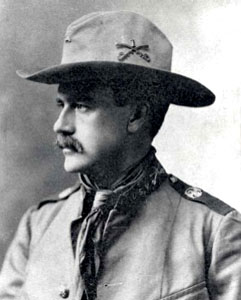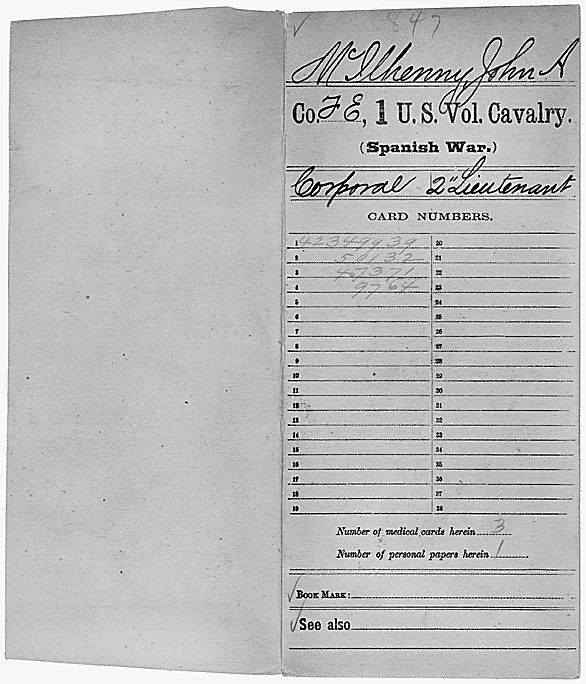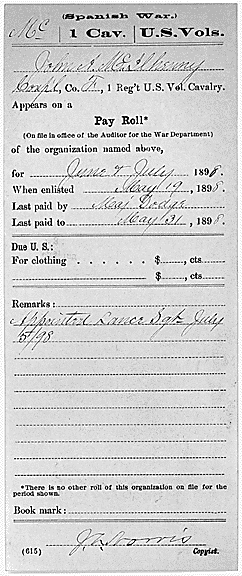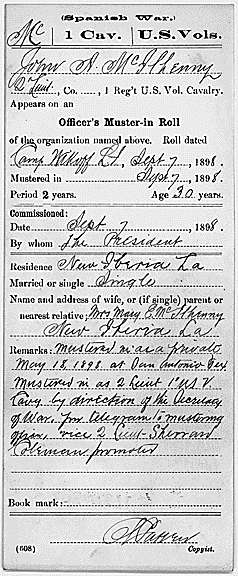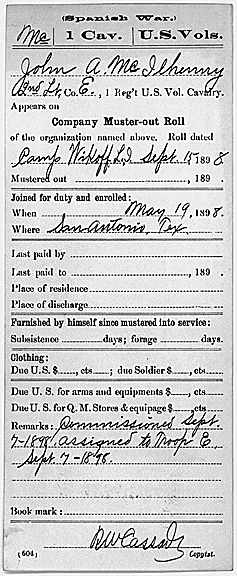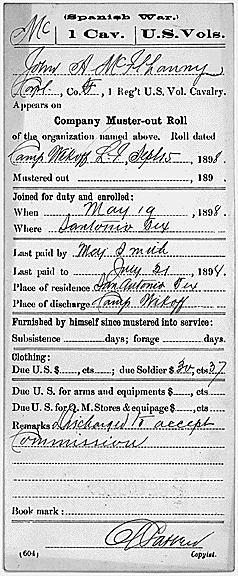The McIlhenny name is prominent in the history of Louisiana. In the mid-1860’s New Orleans banker Edmund McIlhenny retired and moved 125 miles southwest to Avery Island, an upthrust salt dome surrounded by swamps that his wife, Mary Eliza Avery, had inherited. The family first planted Tabasco peppers in the 1860’s and began producing its piquant pepper sauce soon thereafter. The McIlhennys still own the island and still make Tabasco sauce, using the same formula Edmund concocted nearly a century and a half ago.
In 1898 Ned’s brother, John Avery McIlhenny, and Teddy Roosevelt were soldiers in the First U.S. Volunteer Cavalry, later known as the Rough Riders. Having fought together in the battle of San Juan Hill, the two men remained lifelong friends. When John’s son Jack was born in 1909, Roosevelt was his godfather. A silver christening cup engraved from Roosevelt was among the artifacts donated to LSU.
John Avery McIlhenny traveled to Japan, China, the Philippines, and eastern Russia in 1899, when he probably acquired the Oriental pieces found in about a dozen enormous turn-of-the-century steamer trunks in the attic of his son’s house in Baton Rouge. Among the treasures were scores of 19th-century Japanese pieces carefully packed in fragile tissue paper and cotton batting in their original wooden boxes.
There were several small cloisonné vases; a pair of tiny copper cachepots inlaid with other metals; a Satsuma tea set; two signed carved ivory boxes; a 2 inches tall vase with painted flowers; a wonderful carved and painted ivory netsuke of two amorous chickens; a man’s inro (purse) that breaks into five pieces, complete with its original netsuke; tiny figurines of carved and painted ivory; and several elaborately embroidered kimonos. “These are things you never see any more,” said veteran antiques dealer Cary Long. “They had the finest of everything.”
Edmund McIlhenny died in 1890, by which time Tabasco had been in fine restaurants and in the homes of gourmets for over twenty years. Edmund’s oldest son, John Avery McIlhenny took over the company.
John wanted the company to be more lucrative. He set out on a trip through the United States to meet with his father’s clients, to make himself familiar to them. He sent drummers (salesmen) on house-to-house campaigns in a number of cities. The name Tabasco (and a life-size replica of the product) appeared in an operetta, brought to John’s attention by his younger brother Paul. In addition, there was a supermarket contest with a $3,000 prize, and a consumer offer of reproductions of famous paintings in exchange for a Tabasco coupon and a ten cent handling charge.
In 1898, with the outbreak of the Spanish-American War, John McIlhenny joined the First Volunteer Cavalry of the United States Army, the celebrated Rough Riders. John became friends with Teddy Roosevelt. In 1906, John joined the U.S. Civil Service Commission in Washington, leaving behind a pepper sauce business that had grown ten times under his leadership.
Today, Tabasco is the most popular hot sauce on the market, but to compare it to other hot sauces is like comparing Boone’s Farm wine to a bottle of Chardonnay. Tabasco is made by a process that remains basically as it has always been, using seeds of the same lineage as the original seeds McIlhenny nurtured over 125 years ago. Although peppers for Tabasco are still grown on Avery Island, they are also grown in Honduras and Colombia, using only seeds from crops grown on Avery Island.
Courtesy of the McIlhenny Company
J. A. McIlhenny First United States Volunteer Cavalry (Rough Riders)
Service Cards, Courtesy of the National Archives
MCILHENNY, JOHN A
2/LT TRP E 1ST REG US VOL CAV
VETERAN SERVICE DATES: Unknown
DATE OF DEATH: 11/08/1942
DATE OF INTERMENT: 11/10/1942
BURIED AT: SECTION 8 SITE 6242
ARLINGTON NATIONAL CEMETERY
Michael Robert Patterson was born in Arlington and is the son of a former officer of the US Army. So it was no wonder that sooner or later his interests drew him to American history and especially to American military history. Many of his articles can be found on renowned portals like the New York Times, Washingtonpost or Wikipedia.
Reviewed by: Michael Howard

